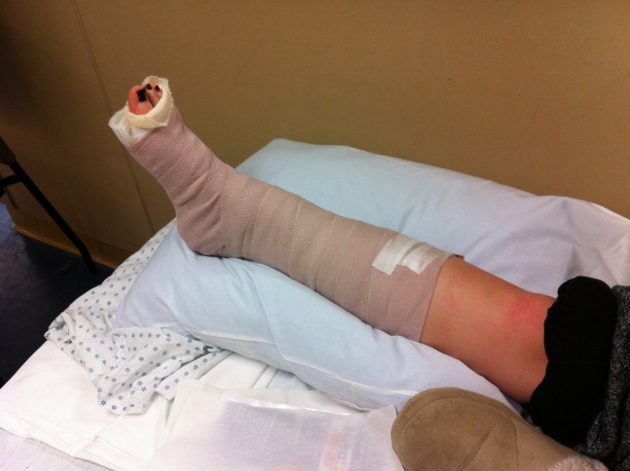Whenever a bone in your body cracks or breaks, it results in a fracture. Three dissimilar bones in your ankle are prone to fracture: tibia, fibula and talus. Tibia is the bigger of the main two bones in your lower leg and the fibula is basically the thinner bone of the main two bones in your lower leg. Both these bones can be felt at the outside of your ankle. The talus refers to a wedge-shaped little bone located very deep inside your ankle and is positioned between the end points of fibula, tibia and your heel bone. When pressure is applied on these bones, it can result in an ankle fracture. Let us find out the answer to the question 'how to break the ankle' in this article.
How to Break Your Ankle

- Car accidents can often result in crushing injuries that can result in ankle fracture or even can break it for good.
- Falling and tripping can break the bones in your feet and ankles. Also, if you jump from a height and land on your feet, it can result in ankle injuries.
- Impact from heavy weights: When heavy weights fall on your foot, they can break your ankle.
- Missteps: Sometimes, when you miss a step while climbing up the stairs or walking down, you can break your ankle.
- Overuse: The weight-bearing bones in your feet and ankles are prone to stress. Strong, repetitive forces or overuse like running for long distances can result in tiny cracks in them. Moreover, stress fracture and bone thinning conditions like osteoporosis can also result in overuse of the bone, leading to ankle injuries.
- Ice skating: Ice skating is another answer for the question "how to break your ankle". When you do ice skating, you often fall on slipper and wet surface, trip time and again, or step into holes. These things can result in terrible ankle fractures and injuries.
- Falling off the ladder: If you fall off the ladder, then you may break your ankle. A hit or fall to the ankle can easily break one or all the three major bones in the ankle joint. The injury may become intense at some point and can affect about two dozen bones in the foot.
- Other ways to break your ankle
- When kicking the football, if you miss it and land the foot on the floor, it can result in ankle fracture.
- When you place the foot down in a wrong manner, stub toes on the furniture, twist the ankle or apply wrong pressure on the foot, you can break your ankle and lead to ankle fractures.
- If you want to break your ankle on purpose, then you should wedge the foot in things that restrict your foot’s movement. For instance, you should place it between two furniture pieces and then jump very quickly. Your foot won’t be able to move which would result in ankle injury, but it will hurt.
Now that you know how to break your ankle, let's move on to discuss the complications you need to watch out for.
- Broken bones may result in loss of blood supply and result in their collapse, death, or can even result in those bones being reabsorbed in your body.
- Damage can affect the neighboring tissues.
- Sharp pieces of bone can sever or compress the nearby nerves or blood vessels.
- The surgeon might have to re-break the bones for aligning them surgically.
- The broken bone pieces may start rejoining while they are still unaligned.
If you don’t seek medical help right away, these complications can exacerbate.
When to See a Doctor
You need to pay a visit to a doctor under the following circumstances:
- If the pain worsens or isn’t improving by taking painkillers;
- If you develop medical problems that prevent you from walking properly;
- If you want to fly after undergoing an ankle surgery, you should consult your GP on the right time to fly.
You might need to return to the hospital if:
- There is numbness or pins and needles in the toes.
- The skin surrounding your foot or ankle turns blue.
- Ankle becomes badly swollen.
- A foul-smelling discharge oozes out from the surgical wound/point on your foot or ankle.
- You have problems with the plaster cast on your foot.
These problems are symptoms of issues with the blood supply to your ankle and the nerves in the ankle and should be treated timely.
